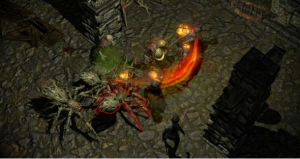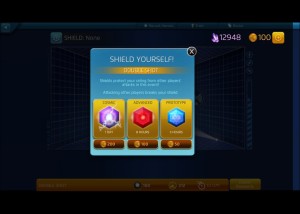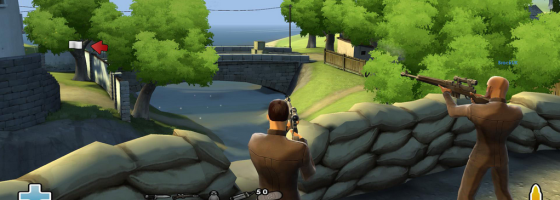F2P games are coming into their own lately and some of the most lucrative are competitive based titles. You get the thrill of competing with other players without the cost that is associated with the major games. However, when you start combining microtransactions and game balancing, things can become troublesome.
Post Purchase Support:
Popular F2P games like League of Legends are built around the constant development of content to keep the game fresh. And sometimes with new content, it can conflict with what has already been developed. Maybe a new character is really just a better more expensive version of something that came out a few months ago. Or one character is considered the objectively best character in the game and therefore the most popular.
When this happens, word spreads fast among the community about the best strategies and content and those tend to become the big sellers. But when purchasable content becomes the best content, this tends to divide the player base.
The ones who have it tend to always come out on top while the ones that don’t struggle until they get lucky or spend the money. Leaving the designers to make a tough choice: Do they take something that is so overwhelmingly powerful and leave it along as a reward, or tone it down to promote game balance?
Now in a traditional game, IE a retail release the choice is obvious: Balance the game to promote a good environment and attract people to play. But in the world of F2P it’s not so easy. For a F2P game to remain viable to continue supporting, it has to bring in money. If X is the most popular purchase in your game because of how powerful it is, do you really want to kill the goose that laid the golden eggs?

Path of Exile was designed around being free to play and keeping all the microtransactions away from the game balance.
What’s worse is how all those people who spend money on the item will take it.
If they were led to believe that X was the best thing in the game and spent their money on it only for the designer to alter it, then they can feel that their money was just thrown away.
This can also apply to games that feature power creep microtransactions: Where every month or so a new purchase comes out that renders the previous one obsolete.
“Fool me once shame on you, fool me twice shame on me” can be used here. How many of those people who just lost their money due to game balancing do you think will spend money again on your game? It’s safe to assume that the people who did spend money are the ones that are helping your game turn a profit every month and it can be akin to a publicly traded company pissing off its investors.
The example for today that inspired this post came from Marvel Puzzle Quest recently that just upset its fan base with a balance patch. One of the characters in the game was considered the best and most annoying to fight. He had one of the highest health totals in the game; skills that cost the fewest points to activate while doing decent damage and setting things up for other characters.
When it came to the PVP aspect of the game and choosing what fights to attempt and which to skip, seeing a high level version of him on a team would cause most players to skip. This made the players who had him more likely to win tournaments and therefore rare characters and the game’s premium currency.
To get the character you would need to get lucky with random drops to first unlock him and to then augment his skills. As we talked about in my analysis, once a skill has been unlocked you could then spend real money as opposed to finding additional drops to strengthen a character.

Marvel Puzzle Quest continues to reward people with money to burn, leaving the rest of the players in the dust.
Doing the math it cost about 100$ to fully level this character’s skills once you’ve unlocked one level in both his skills.
After months of this being the status quo and of course people buying him like this, the developers released a patch that significantly reduce his combat potential while promising further rebalancing for other characters considered top tier.
As you can guess, the people who did have him were furious with many threatening to leave the game and demanding refunds, while the ones who didn’t were happy. A situation that the developers truthfully dug their own graves thanks to months of no formal information about their plans.
Whenever you open the floodgates of gameplay or gameplay enhancing microtransactions, the chance of upsetting your fanbase with game changing decisions is always there. While the simplest answer to this would be to not have any purchases that affect gameplay, that’s not always an option. However, there are some things that you can do to help mitigate your fanbase from getting upset.
Keep the Peace:
One of the biggest changes in the Game Industry over the years has been how open the development process has become between consumer and designer. It’s no longer considered prudent to lock yourselves in your studio for 12 months with only a teaser screenshot every three months as an update on progress.
Indie developers know that word of mouth is vital to their success, both from just selling the game and even for things like getting on Steam or other distribution platforms. So it’s common now to keep providing information about their game, just to keep the word of mouth going.
With F2P games this becomes all the more important as you want people to stay invested in your title. Your fan base should always have an idea of what’s coming next with your game. Not only is this meant to keep people excited but it’s also important for morale. If people are spending money on your game and there is no new information for months on end, people will start to suspect that the game is dying or has been abandoned.
Anything related to game balance should never remain a secret and the community should know what the developers are thinking. Riot Games with League of Legends was incredibly smart on this regard and released weekly videos detailing what’s coming in the new patch along with forum posts about the future of the game.
So that when the developers did have to alter the game balance, the fan base not only knew well in advance but they knew the reasoning. This helped cut down the fans from being upset and made game changes welcomed as opposed to being viewed as arbitrary changes to the design.
Selling content to your fan base is like opening up Pandora’s box and requires a careful eye to game balance in order to get it right. Just remember, at the end of the day your game should be balanced around anyone having a shot at winning and not those with the biggest bank accounts.


